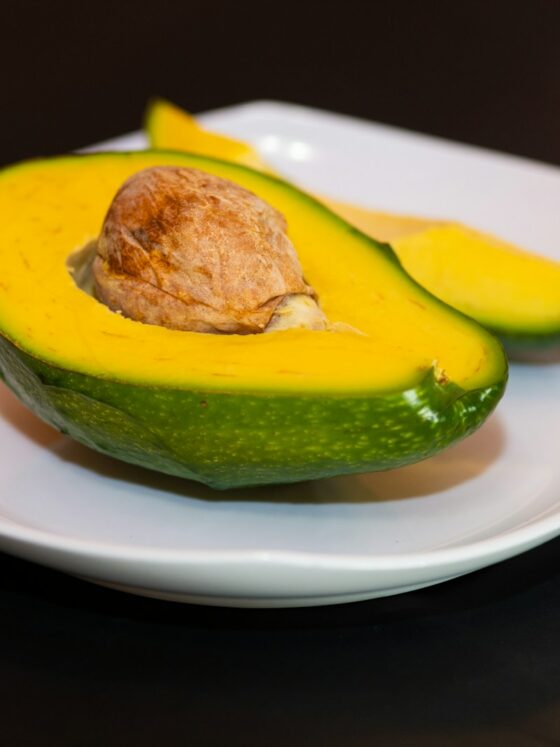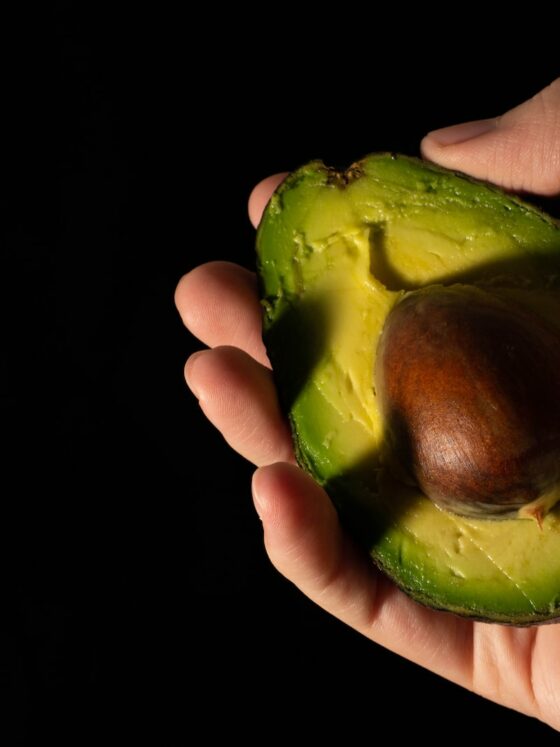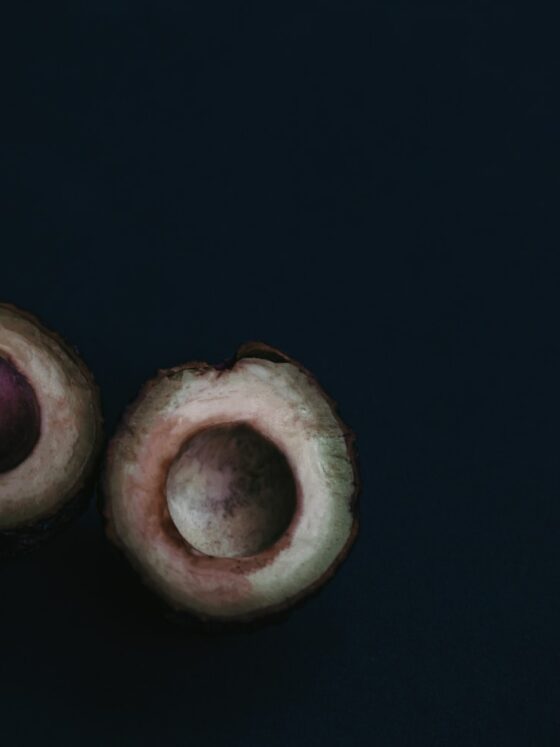Have you wondered how many different types of avocados are there for you to try?
According to antique literature, there are over 1000 varieties around the world! It might be difficult for you to get to all of these, considering how limited commercial retail tends to be, but there are, still, a few types of avocado you can’t miss.
Avocados can be divided firstly into two camps by the kind of flowers they have: type-A and type-B. The three main strains of avocados are Guatemalan, Mexican, and West Indian, and, within these categories, 17 common varieties diverge in shape, size, color, texture, and flavor.
Table of Contents
Type-A and Type-B
Avocados are like hermaphrodites – they have both male and female sexual organs. These organs, however, don’t function at the same time, meaning that avocado flowers’ sexual organs are active at different times of the day. This is a characteristic that, in botany, is called dichogamy. The difference between type-A and type-B avocados lays here.
Type-A flowers are female in the morning and male in the afternoon. Type-A trees produce flowers that open in the morning to receive pollen, close, and then open again the next morning to complete the pollination cycle. In the afternoon or evening, while the female organs are shut, the flowers open as males, in order to shed the pollen.
Within the Type-A avocados, there are the following (common) types: Choquette, Gwen, Hass, Lula, Maluma, Mexicola, Pinkerton, and Reed.
Type-B avocado trees, on the other hand, produce flowers that open in the afternoon or evening as females to receive pollen – the exact opposite to Type-A trees –, close back up, and then reopen in the morning, now as male flowers, to shed the pollen.
Within the Type-B avocados, there are the following (common) types: Bacon, Brogdon, Ettinger, Fuerte, Monroe, Sharwil, Sir Prize, and Zutano.
Types of Avocados
Let us, now, move on to the different types of avocado!
A-Type Cultivars
Choquette Avocados

Originated in South Florida, the Choquette avocado is a mixture of West Indian and Guatemalan types. It’s a very large fruit; it’s oval-shaped and it has dark green, smooth, and lustrous skin. The Choquette avocado is rich in water, making it a quite juicy variety. This avocado type matures during the winter, from October to January.
Gwen Avocados

Gwen avocados are of the Guatemalan variety, and they were first developed in California. These avocados, which are a descendant of the Hass variety, have a rounder shape and are slightly larger than their pear-shaped counterparts. The Gwen type has dark green skin and a small seed in its golden-green, creamy, flavorful content. The skin is thick, thus easy to remove. Gwen avocados, known for their distinctive nutty taste and high oil content, are available during summertime.
Hass Avocados

Originating in California and of the Guatemalan family, Hass avocados are an oval-shaped, medium-sized fruit. They have pebbly, thick skin that ripens from green to blackish-purple, which is easy to remove. Their flesh is pale green, velvety, barely fibrous, and rich in flavor (these are perfect for guacamole!). Hass avocados are available all year.
Lula Avocados

Of Guatemalan and West Indian heritage, Lula avocados originated in South Florida. They are pear-shaped and their skin is glossy and green. Their flesh has high oil content. These avocados mature from October to February.
Maluma Avocados

Maluma avocados were discovered in South Africa in the late 20th century. They are a very large, pear-shaped type of avocados with rough, green skin that becomes dark purple when ripe. Their origin is yet unknown, however, it appears to be related to Guatemalan varieties with Mexican gene characteristics.
Mexicola Avocados

The Mexicola avocado originated in Mexico. It’s a small, somewhere between a pear and oval-shaped fruit, with thin, shiny, black skin. Its flesh is juicy, chewy, and sweet. The Mexicola avocado is difficult to peel because of the thinness of its skin. Mexicola leaves have a distinct anise-like scent, which is a characteristic of the Mexican variety of avocados. West Indian and Guatemalan have no anise-scent. Mexicola avocado’s season is September.
Pinkerton Avocados

Pinkerton avocado is an oblong-shaped fruit of the Guatemalan family that was first grown in California and can be grown in many different locations since they’re resistant to cold and frost. Their green colored skin is thick, so they are easy to peel. The Pinkerton variety has high oil content, houses a very small seed, and has a very tasty and nutty flavor and a creamy flesh. Pinkerton avocados are available early winter through summer, or even early fall.
Reed Avocados

The Reed avocado is of Guatemalan parentage, original from California. It is one of the largest varieties. Reed avocados are round-shaped and are dark green. Their skin is thick and slightly pebbled. It has a big seed, but its robust size allows it to still carry a substantial amount of Reed avocado. It’s a variety known for its golden flesh with a nutty flavor and a creamy consistency. Many consider them the tastiest variety of avocados. Reed avocados are available in the summer months and early fall.
B-Type cultivars
Bacon Avocados

This variety is a Mexican hybrid and was born in California. They’re medium-sized and oval-shaped. Their skin is dark green with faint speckles throughout. Their flesh is pale green, less oily than Hass avocados – but just as delicious –, light, and creamy. The central pit in Bacon avocados is large, taking up a significant amount of flesh in the fruit. Bacon avocados are available mid to late winter.
Brogdon Avocados

This variety is a complex hybrid of Mexican and West Indian origins. Brogdon avocados are also pear-shaped and their skin is dark purple. In fact, they share their skin color with the Hass variety, but, whereas the Hass variety’s skin is rough, Brogdon’s is quite smooth and extremely hard to peel.
Their flesh is bright yellow and their flavor is rich and nutty. In case you’re interested in having your own avocado tree, the Brogdon variety grows very well in containers, as long as you’re able to provide an adequate sized pot for root development and a lot of sunlight!
Ettinger Avocados

This variety, a cross between Mexican and Guatemalan families, is predominantly grown in its birthplace, Israel. The Ettinger avocados bear a striking resemblance to Fuerte avocados – they are pear-shaped with a smooth, thin, bright green skin that does not peel easily. The Ettinger variety is known for its subtle flavor and low oil content. These avocados contain a large seed, which accounts for ¼ of the fruit’s weight. Ettinger avocados are available from mid-fall through early winter.
Fuerte Avocados

Born from a Mexican and Guatemalan cross, and original from Mexico, the Fuerte avocado is a medium-sized fruit and has an elongated and pear-like shape. It has a smooth, thin, deep green colored skin with some dark speckling. Its flesh is dense, yellow, and slightly oily. It has a rich and creamy flavor with a hint of hazelnuts. Fuerte avocados are available from December through February.
Monroe Avocados

Originating in Florida, Monroe avocados have Guatemalan and West Indian heritage. They are one of the largest varieties. These avocados are round-shaped, their green skin is glossy and rough, and the flesh is barely watery. The fruit matures between December and January.
Sharwill Avocados

Guatemalan and of Australian origin, the Sharwill avocado is a medium-sized, pear-shaped-fruit. These avocados are characterized by their rough, green skin and their yellow-green, creamy, highly oily flesh. Sharwill avocados’ flesh houses one of the smallest seeds of the avocado family, which means that there’s an ample amount of buttery flesh inside each fruit. This variety’s flavor is nutty and rich.
Avocados don’t ripen on the tree, therefore farmers essentially control the yield of their harvest. As for Sharwill avocados, if harvested toward the beginning of the season, they will be firmer, similar to cool butter; if harvested further into the season, they will be creamier. This variety is available in late fall through winter.
Sir Prize Avocados

The Sir Prize avocado originated in California, is a Mexican hybrid that is appreciated for its high-quality taste. It is much sought after for its large fruit and small seed. The fruit is pear-shaped and its skin turns black when ripe – like the Hass variety. The difference between Sir Prize and Hass avocados rests in the fact that the first has thinner, less pebbled skin than the latter. The flesh is buttery, yellow-green, and oily, with a nutty and sweet flavor. They peak during the winter, for they endure low temperatures. Their flesh stays green even after you cut it.
Zutano Avocados

This avocado comes from the Mexican family and was developed in California. The Zutano avocado resembles the Fuerte variety with its pear shape and thin, shiny, green skin. However, it’s not as rich in flavor. It’s a medium-sized variety with pale green flesh and light flavor. It’s low in oil content but high in water, making it less creamy than other popular avocado varieties. The Zutano avocado is available from mid-fall through late winter.
If you want to know more avocado species, you can search them here (there are over 1.000!).
Now that you are familiar with these different types of avocados, we hope you get in the kitchen and cook nutritious and delicious meals!












